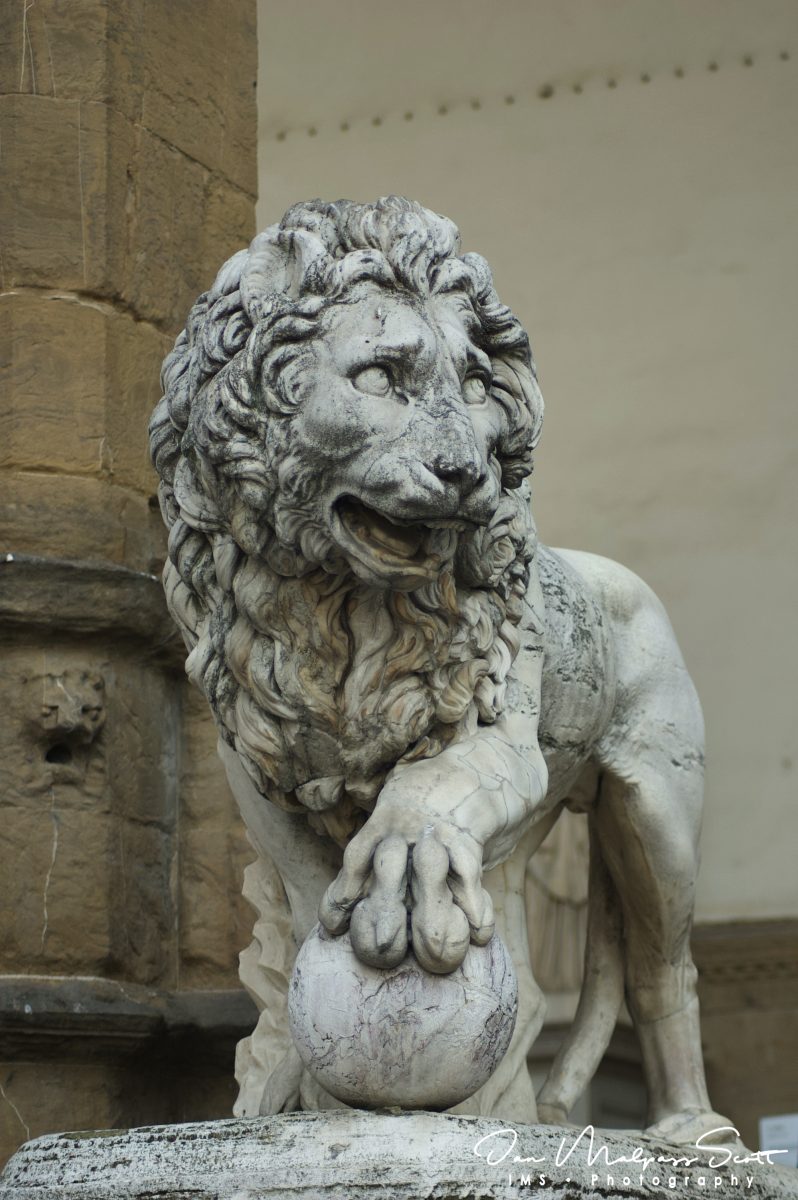![]()
The Medici lions are a pair of marble sculptures of lions, one of which is Roman, dating to the 2nd century AD, and the other a 16th-century pendant; both were by 1598 placed at the Villa Medici, Rome. Since 1789 they have been displayed at the Loggia dei Lanzi in Florence. The sculptures depict standing male lions with a sphere or ball under one paw, looking to the side. The Medici lions have been copied, with varying degrees of exactness, in many other locations.
This image is of the pendant by Vacca.
A pair of lions were required by Ferdinando I de’ Medici, Grand Duke of Tuscany, who had acquired the Villa Medici in 1576, to serve as majestic ornaments for the villa’s garden staircase, the Loggia dei leoni. The first lion originates from a 2nd-century marble that was first mentioned in 1594, by the sculptor Flaminio Vacca, by which time it was already in the collection of Ferdinando; Vacca reported that it had been found in the via Prenestina, outside Porta San Lorenzo. According to Vacca, the lion had been a relief, which was carved free of its background and reworked by “Giovanni Sciarano” or Giovanni di Scherano Fancelli, of whom little is now known.
The second was made and signed by Vacca, also in marble, as a pendant to the ancient sculpture at a date variously reported as between 1594 and 1598 or between 1570 and 1590. The pair were in place at the Loggia dei Leoni in 1598. The pendant was made from a capital that had come from the Temple of Jupiter Optimus Maximus.
The Villa Medici was inherited by the house of Lorraine in 1737, and in 1787 the lions were moved to Florence, and since 1789 they flank the steps to the Loggia dei Lanzi at the Piazza della Signoria.
The sculptures were replaced by copies at the Villa Medici when Napoleon relocated the French Academy in Rome to the villa in 1803. These copies were made by the French sculptor Augustin Pajou.


